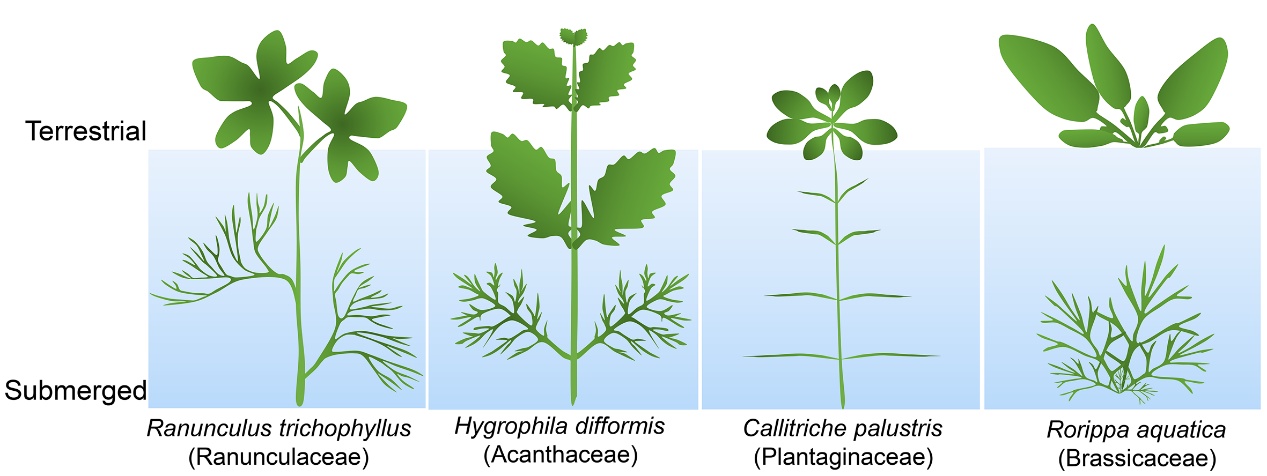2025-04-27 中国科学院(CAS)
 The morphology of four typical heterophyllous plants (Image by IHB)
The morphology of four typical heterophyllous plants (Image by IHB)
<関連情報>
- https://english.cas.cn/newsroom/research_news/life/202504/t20250427_1042073.shtml
- https://onlinelibrary.wiley.com/doi/10.1111/pce.15571
植物が水ストレスに適応する秘密を解明する Uncovering the Secrets of How Plants Adapt to Water Stress
Gaojie Li, Na Wei, Hongwei Hou
Plant, Cell & Environment Published: 21 April 2025
DOI:https://doi.org/10.1111/pce.15571
ABSTRACT
The frequency of flooding and other naturally occurring stresses caused by global climate change is increasing rapidly worldwide. Recent research has uncovered the morphological, physiological, and molecular mechanisms underlying water stress adaptation in model plants. This review synthesizes recent advances in understanding water adaptation, not only in model terrestrial plants but also in amphibious and aquatic plants. Plants respond to flooding stress through various adaptive strategies, including (1) the low-oxygen quiescence strategy (LOQS), which conserves energy by pausing metabolism and growth during flooding, and (2) the low-oxygen escape strategy (LOES), where plants elongate organs rapidly to reach the water surface and access more oxygen. In amphibious plants, heterophylly enables the production of dramatically different leaf forms to adapt to terrestrial versus submerged environments, representing a third strategy– the “variation” strategy for water stress adaptation. Unlike terrestrial crops, which must “wait” or “escape” during flooding, amphibious plants can naturally thrive in both aquatic and terrestrial habitats. In addition to heterophylly, other mechanisms of water stress adaptation in amphibious and aquatic plants are also discussed. Understanding these mechanisms can advance our knowledge for developing future flood-resilient crops, which are essential for sustainable agriculture under changing climates.


